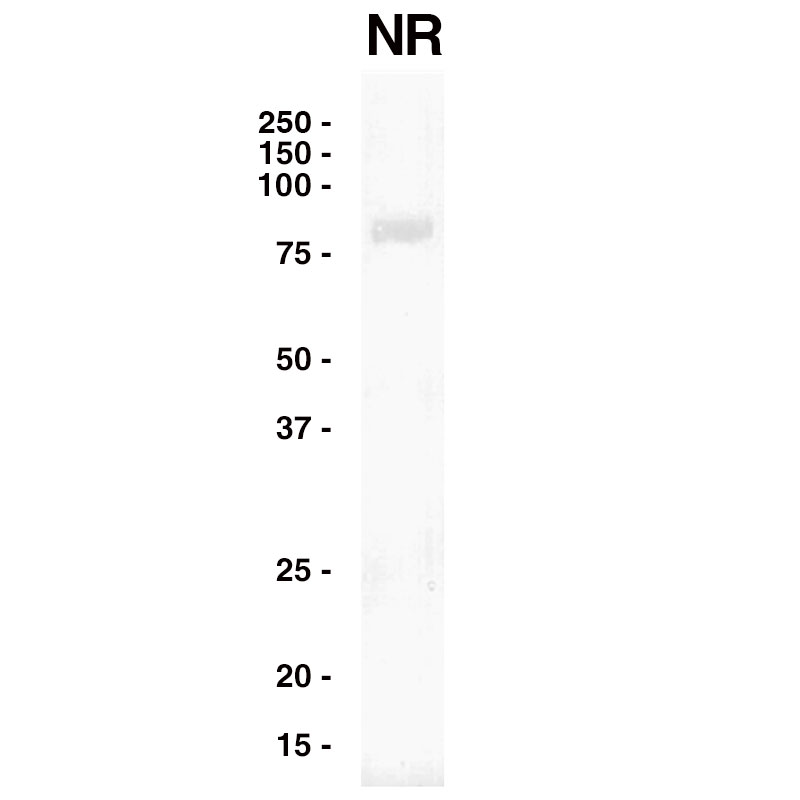Recombinant Human EGFR (ErbB1)
Storage:
This lyophilized protein is stable for twelve months when stored at -20°C to -70°C. After aseptic reconstitution this protein may be stored for one month at 2°C to 8°C or for 3 months at -20°C to -70°C in a manual defrost freezer. Avoid Repeated Freeze Thaw Cycles.
No additional charges, what you see is what you pay! *
Stay in control of your spending. These prices have no additional charges, not even shipping!
* Rare exceptions are clearly labelled (only 0.14% of items!).
Multibuy discounts available!
Contact us to find what you can save.
This product comes from:
US.
Typical lead time:
14-21 working days.
Contact us for more accurate information.
- Further Information
- References
- Show All
Further Information
Purified No Carrier Protein
This recombinant protein was lyophilized from 0.01M Phosphate Buffered Saline (150mM NaCl) (PBS) pH 7.4, with 5% Trehalose and 1mM TCEP.
This recombinant protein was lyophilized from 0.01M Phosphate Buffered Saline (150mM NaCl) (PBS) pH 7.4, with 5% Trehalose and 1mM TCEP.
Epidermal growth factor receptor (EGFR, also known as ErbB1 or HER-1), along with receptors ErbB2, ErbB3, and ErbB4, belongs to the receptor tyrosine kinase superfamily and is a transmembrane glycoprotein that activates various signaling pathways fundamental to cellular proliferation, differentiation, and survival1, 2. EGFR consists of an extracellular ligand binding domain, a single transmembrane domain, and an intracellular carboxyl-terminal domain with intrinsic tyrosine activity that, following ligand binding, is responsible for the phosphorylation of signaling molecules and serves as a docking site for intracellular adaptor proteins1, 2. Seven ligands are known to activate EGFR: epidermal growth factor (EGF), transforming growth factor-?, heparin-binding EGF, β-cellulin, amphiregulin, epiregulin, and epigen.
EGFR plays important roles during embryogenesis and organogenesis and in the growth, differentiation, maintenance, and repair of adult tissues, including the nervous system2. Additionally, EGFR plays a role in skin homeostasis2, angiogenesis in wound healing2, kidney physiology2, and autophagy3. Dysregulation and somatic mutation of EGFR are associated with disease and cancer. Changes to EGFR expression and/or signaling pathways that impact EGFR function are associated with Parkinson?s disease2, Alzheimer?s disease1, 2, and amyotrophic lateral sclerosis2. In several human cancers (lung, glioblastoma, brain, breast, colorectal, ovarian), EGFR signaling is altered due to EGFR gene amplification and/or protein overexpression, mutations, or in-frame deletions3. Inappropriate activation of EGFR in cancer can also result from abnormal receptor endocytosis and trafficking. EGFR is the target of multiple cancer therapies, including monoclonal humanized antibodies and selective small molecule inhibitors.
Additionally, EGFR is a host factor that facilitates viral entry for hepatitis B4, hepatitis C5, and gastroenteritis6. EGFR also plays a role in SARS-CoV-2 infection and is a possible target of antiviral therapy7, 8, 9.
1956
?95% by SDS Page
EGFR



